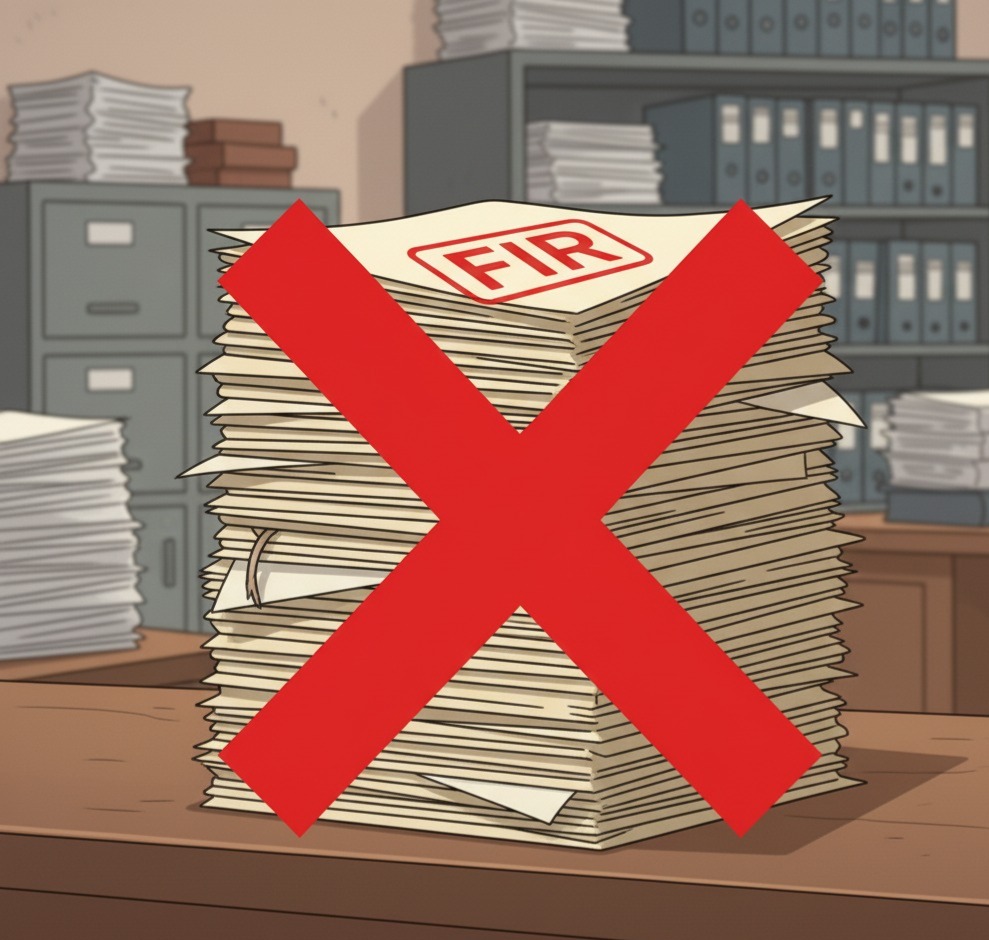Negligent Doctor? Here’s How to Legally Claim Compensation in India (2025 Guide)
By SolvLegal Team

Quick Answer:
If a routine treatment or surgery leaves you worse off, you have legal options. This guide explains, in plain language, what counts as medical negligence in India, how to prove it, where to file a complaint, and what compensation you can realistically expect in 2025. It focuses on remedies under the Consumer Protection Act, 2019, as well as criminal provisions, such as Section 106 BNS (for death by negligence), and relevant professional regulations. You’ll get a practical, step-by-step checklist of documents to collect, the right forums to approach (District/State/National Consumer Commissions), typical timelines, and defenses doctors commonly use, all with clear action points so you can move forward without getting lost in legal jargon.
When Treatment Goes Wrong: A Relatable Example & What Counts as Medical Negligence
Imagine this: you visit a reputed hospital for a simple appendix surgery. The doctor assures you it’s a routine procedure. But a week later, you develop severe complications because a surgical instrument was accidentally left inside your body. Shocked and helpless, you start wondering , is this just bad luck, or was it negligence?
That’s where the law steps in.
Under Indian law, medical negligence occurs when a doctor or healthcare provider fails to exercise the level of care and skill that a reasonably competent professional would have used in similar circumstances. It’s not about punishing every mistake, medicine, after all, isn’t an exact science, but about holding professionals accountable when carelessness causes harm.
Legally speaking, a claim for medical negligence generally requires three elements:
- Duty of Care – The doctor owed you a professional duty (e.g., to diagnose, treat, or operate properly).
- Breach of Duty – The doctor acted carelessly or failed to follow accepted medical practice.
- Damage – You suffered harm (physical, mental, or financial) as a result.
This principle was laid down in the landmark Supreme Court judgment Dr. Laxman Balkrishna Joshi v. Dr. Trimbak Bapu Godbole[1], where the Court held that a medical professional must bring to his task a reasonable degree of skill and knowledge and must exercise reasonable care. Failure to do so constitutes negligence.
Later, in Indian Medical Association v. V.P. Shantha (1995)[2], the Supreme Court made it clear that patients can sue negligent doctors and hospitals under the Consumer Protection Act, recognizing medical services as “services” within its meaning. This decision opened the doors for thousands of patients to claim compensation without having to undergo lengthy civil trials.
In short, not every unsuccessful treatment equals negligence. But when doctors or hospitals act recklessly, ignore standard procedures, or show clear lapses in care, the law allows patients to demand accountability , and compensation.
Your Legal Rights in 2025: Key Laws and Authorities
By 2025, India’s legal framework for medical negligence has become more defined, thanks to the Consumer Protection Act, 2019, and evolving court interpretations. If a doctor, hospital, or clinic fails to provide reasonable care, you can take action through several legal routes , depending on the nature and severity of the harm.
Let’s break them down simply:
1. Consumer Protection Act, 2019
This is the most common and accessible path for patients. Under Section 2(42), medical services are recognized as “services,” and any deficiency (as defined under Section 2(11)) in those services gives you the right to file a complaint.
You can approach:
- District Consumer Commission – for claims up to ₹50 lakh
- State Consumer Commission – for ₹50 lakh to ₹2 crore
- National Consumer Commission (NCDRC) – for claims above ₹2 crore
These forums can order refunds, compensation, or even disciplinary directions against hospitals and doctors.
2. Indian Penal Code (IPC), 1860
If negligence results in serious injury or death, you may also seek criminal action under:
- Section 106 – Causing death by negligence
- Section 125 – Causing hurt or grievous hurt by a negligent act
Criminal complaints are generally reserved for gross negligence , not for ordinary errors of judgment , and must be supported by expert medical opinion.
3. Civil Law and Tort Claims
A patient can also file a civil suit for damages under the Law of Torts. However, this process tends to be lengthy and costlier compared to consumer forums.
4. Medical Council of India (now National Medical Commission)
For ethical misconduct, complaints can be made to the National Medical Commission (NMC) or its State Medical Councils, which have the power to suspend or cancel a practitioner’s license.
Together, these routes ensure that negligence , whether minor or fatal , does not go unchecked. The law aims not only to compensate victims but also to improve accountability in India’s healthcare system.
How to Prove Medical Negligence , Step-by-Step Practical Checklist
Proving medical negligence isn’t just about saying, “The doctor made a mistake.” You must show how that mistake breached the accepted standard of care and directly caused harm. Here’s a simple, actionable checklist to help you gather the right evidence before filing a complaint.
Step 1: Collect All Medical Records
Ask for prescriptions, diagnostic reports, consent forms, discharge summaries, and billing details. Under the Clinical Establishments (Registration and Regulation) Act, 2010, hospitals are required to provide copies of all your records within 30 days of your written request.
Step 2: Get an Independent Medical Opinion
Before filing a case, consult another qualified doctor or specialist who can confirm whether the treatment given deviated from accepted medical standards. Courts often rely on such expert opinions to determine negligence.
Step 3: Identify the Breach
Was the doctor careless in diagnosis, surgery, follow-up, or medication? Document specific lapses such as:
- Wrong diagnosis or delayed diagnosis
- Surgical errors (e.g., leaving instruments inside the body)
- Wrong medication or dosage
- No informed consent before a risky procedure
- Poor post-operative care
Step 4: Establish a Direct Link
You must connect the doctor’s act (or omission) to the harm caused. For example, an infection due to non-sterile instruments clearly shows causation.
Step 5: Quantify the Damage
Include both tangible and intangible losses: medical expenses, lost income, mental trauma, and reduced quality of life. Courts also consider long-term effects, especially in cases involving permanent disability or loss of earning capacity.
Step 6: File a Legal Notice or Complaint
Once evidence is in place, file a written complaint before the appropriate Consumer Commission or Medical Council. The complaint should clearly state the facts, negligence involved, compensation sought, and supporting documents.
This process might sound complex, but many platforms , including SolvLegal , now offer legal templates and consultation support to help you draft complaints correctly and ensure all legal requirements are met before submission.
How to File a Medical Negligence Complaint and What You Can Claim
If a doctor’s carelessness or hospital’s negligence has caused harm, you have the legal right to claim compensation. The process is not as complicated as it seems , it’s about knowing the right steps and evidence.
Step 1: Gather Evidence
Collect all relevant medical records, prescriptions, hospital bills, discharge summaries, and any written communication with the doctor or hospital. If possible, also obtain an independent medical expert’s opinion, as courts often rely on such testimony to confirm negligence.
Step 2: Identify the Correct Forum
Under the Consumer Protection Act, 2019, you can approach:
· District Consumer Commission – if the claim value is up to ₹50 lakh
· State Commission – for ₹50 lakh to ₹2 crore
· National Commission (NCDRC) – for claims above ₹2 crore
You may file the complaint online through the e-Daakhil portal, which simplifies filing without needing physical visits.
Step 3: Draft and File the Complaint
Clearly describe what went wrong , what treatment was taken, how negligence occurred, and what harm resulted. Attach all documents, receipts, and expert opinions. Pay a nominal fee depending on your claim amount.
Step 4: Await Hearing and Evidence Review
The Commission will issue notice to the doctor or hospital. Both sides present their evidence, and expert witnesses may be called. Cases often conclude within 6–12 months depending on complexity.
Step 5: Claimable Compensation
If negligence is proven, the Commission may order:
· Reimbursement of medical expenses (including corrective treatments)
· Compensation for pain, trauma, and loss of income
· Damages for permanent disability or mental distress
· Punitive damages, in rare cases, to deter repeated misconduct
The Supreme Court in Spring Meadows Hospital v. Harjol Ahluwalia (1998)[3] emphasized that compensation must cover both physical injury and emotional suffering.
How Courts Calculate Compensation
· Courts rely on medical expert reports, income proofs, and precedent judgments to estimate fair compensation.
· The National Consumer Commission and Supreme Court have repeatedly emphasized that the purpose is not to punish doctors but to ensure justice and fair redressal for victims.
Under the Consumer Protection Act, 2019, compensation can also include interest and litigation costs, ensuring patients aren’t burdened by the expense of seeking justice.
Step 6: Enforcement of Order
Once an order is passed, the hospital or doctor must pay the awarded amount within the prescribed period. Non-compliance can lead to execution proceedings or attachment of property.
Pro Tip: Before filing, it’s wise to consult a legal expert or a platform like SolvLegal, which can help you draft the complaint, verify evidence, and ensure compliance with the Consumer Protection Act. This can save time, prevent errors, and improve your chances of getting fair compensation.
Common Defences by Doctors and Hospitals , and How to Counter Them
Once you file a negligence claim, expect the hospital or doctor to come prepared with their own defence. Understanding these common arguments , and how to respond , can make or break your case.
Let’s look at the top ones:
1. “Every Risk Was Explained , You Gave Consent”
Hospitals often argue that you signed a consent form acknowledging potential risks before surgery or treatment.
Your Response: Consent doesn’t protect them if there was gross negligence or lack of reasonable care. For instance, if a sponge or instrument was left inside during surgery, no consent form can justify that. Courts in India have repeatedly held that consent is not a licence to act carelessly.
2. “It Was a Complication, Not Negligence”
Doctors may claim that your harm was an “unavoidable medical complication.”
Your Response: Ask for independent expert opinion to show that the outcome was not a normal risk but resulted from a breach of duty. The burden of proof shifts if evidence shows standard procedures weren’t followed.
3. “We Followed Accepted Medical Practice”
This defence relies on the Bolam Test , a doctor is not negligent if they acted in accordance with a practice accepted as proper by a responsible body of medical professionals.
Your Response: Highlight deviations , missing records, ignored symptoms, or unqualified staff involved in treatment. Courts look for reasonable competence, not perfection.
4. “No Causal Link Between Act and Harm”
They might argue your injuries were due to a pre-existing condition.
Your Response: Produce medical reports and timelines showing that you were stable before treatment and that harm directly followed the doctor’s act or omission.
5. “Complaint Filed Too Late”
Under Section 69 of the Consumer Protection Act, 2019, you must file a complaint within two years from the date of cause of action.
Your Response: Delays can be condoned if you show valid reasons , such as continued treatment or late discovery of negligence. Courts are generally lenient in genuine cases.
Knowing these defences helps you prepare your documents, anticipate counterarguments, and present a stronger, well-supported claim.
Conclusion & How SolvLegal Can Help , Practical Next Steps
Medical negligence cases can be emotionally draining and legally complex. But knowing your rights , and acting promptly , can make all the difference between frustration and justice.
If you or someone you know has suffered due to a doctor’s carelessness, don’t ignore it or assume “these things just happen.” The law recognizes your right to safe, competent medical treatment and provides clear remedies under the Consumer Protection Act, 2019, civil law, and even the Bharatiya Nyaya Sanhita for serious cases.
Start by collecting your medical records, getting an expert opinion, and documenting every communication with the hospital. File a well-drafted complaint before the right forum, preferably through online channels like the E-Daakhil Portal, to save time and cost. Remember, even a simple written complaint with supporting documents can trigger a formal investigation.
In 2025, with India’s growing focus on digital access to justice, platforms like SolvLegal can help make this process easier. They connect individuals and SMEs with verified legal professionals, offer ready-to-use complaint templates, and ensure that every step, from filing to follow-up , stays legally compliant and transparent.
Ultimately, holding negligent medical practitioners accountable is not just about compensation. It’s about restoring trust in healthcare and ensuring that others don’t face the same ordeal.
FAQs on Medical Negligence in India
1. What legally counts as medical negligence in India?
Medical negligence occurs when a doctor or hospital fails to provide care that a reasonably competent professional would have offered in similar circumstances. It could be wrong diagnosis, careless surgery, or lack of post-treatment care. Courts often apply the Bolam Test (from Bolam v. Friern Hospital Management Committee, 1957) , meaning a doctor is not negligent if they acted according to a responsible body of medical opinion.
2. Which law protects patients from medical negligence?
Patients can file complaints under the Consumer Protection Act, 2019, since medical services are considered a service under law (as affirmed in Indian Medical Association v. V.P. Shantha, (1995) 6 SCC 651).
Serious cases causing injury or death can also invite criminal action under Section 304A of the Indian Penal Code (IPC) for causing death by negligence.
3. How do I file a medical negligence case in India?
You can file a complaint before the Consumer Disputes Redressal Commission , District, State, or National , depending on the compensation claimed.
The complaint should include medical records, expert opinions, and proof of payment. You can also file online through the E-Daakhil Portal, which makes the process faster and paperless.
Platforms like SolvLegal can help you draft and file these complaints correctly.
4. What compensation can a victim get for medical negligence?
Compensation varies by case , it can cover hospital bills, future treatment costs, mental agony, or even loss of income.
5. How much time do I have to file a medical negligence complaint?
Generally, under Section 69 of the Consumer Protection Act, 2019, you must file within two years from the date of the incident. However, the court may allow a delay if there’s a valid reason (like ongoing treatment or late discovery of negligence).
6. Can a doctor lose their license for medical negligence?
Yes. Apart from legal compensation or criminal penalties, the Medical Council of India (now the National Medical Commission) can take disciplinary action, including suspension or cancellation of license, under Regulation 8.2 of the Indian Medical Council (Professional Conduct, Etiquette and Ethics) Regulations, 2002.
Related article:
1. What Happens After Filing an FIR in India?- A Simple Guide
About the Contributor: Gaurav Saxena is the founder of SolvLegal, where he brings together dual expertise in engineering and law to guide clients through complex corporate and compliance matters. With a strong grounding in the law of contracts, corporate law, intellectual property, IT law and data privacy, he works with startups and established businesses alike to structure agreements, advise on governance and safeguard innovation.
Author: Kunal Singh is a second-year B.Sc. LL.B. (Hons.) student at National Forensic Sciences University, Gandhinagar.
Disclaimer
The information provided in this article is for general educational purposes and does not constitute a legal advice. Readers are encouraged to seek professional counsel before acting on any information herein. SolvLegal, the author and the contributor disclaim any liability arising from reliance on this content. Connect with SolvLegal on LinkedIn.
[1] MANU/SC/0362/1968
[2] MANU/SC/0836/1995
[3] MANU/SC/1014/1998





.jpg)
Leave a Comment